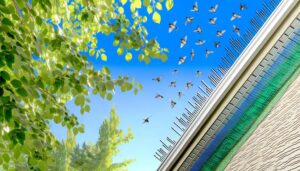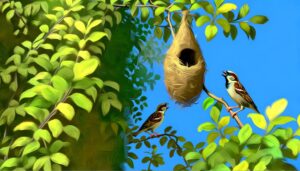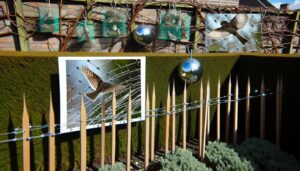How Long Do Sparrows Stay in the Nest: A Guide to Monitoring
Sparrows stay in the nest for around 14 to 17 days post-hatching. Initially, they emerge blind and featherless, completely dependent on parental care.
By days 4 to 6, you'll notice pin feathers appearing. Their eyes open between days 7 to 9, enhancing their awareness and mobility.
Feather growth and improved motor skills manifest by days 10 to 14. During this period, parents feed them a diet rich in insects and seeds, supporting rapid development.
Around day 14, fledgling signs such as wing flapping and perching indicate readiness for their first flight. Curious about this intricate process? There's much more to discover.

Key Takeaways
- Sparrows typically stay in the nest for 14 to 17 days after hatching.
- Nestlings remain dependent on their parents for feeding and care during this period.
- They undergo significant physical development, including feather growth and improved motor skills.
- Parental care includes feeding, protection, and maintaining nest hygiene.
- Fledging occurs when nestlings are ready for their first flight, usually between days 14 and 17.
Sparrow Egg Incubation

Sparrow egg incubation typically lasts between 10 to 14 days, during which the female diligently maintains ideal temperature and conditions for embryo development. You'll observe her turning the eggs regularly to guarantee even warmth distribution and prevent the yolk from sticking to the shell.
This process is critical for peak embryonic growth. The female's body heat, known as brooding, keeps the eggs at a consistent temperature, usually between 37 and 38 degrees Celsius. She rarely leaves the nest, only taking brief breaks for feeding and hydration.
If you're monitoring a sparrow nest, ensure minimal disturbance to avoid stressing the incubating female. Your careful observation can contribute to understanding these intricate behaviors and support avian conservation efforts.
Hatching and Early Days
When the eggs finally hatch, the tiny nestlings emerge blind, featherless, and wholly reliant on their parents for warmth and nourishment. These altricial hatchlings require constant care, with both parents actively participating in feeding and brooding.
The parents provide regurgitated food, rich in essential nutrients, ensuring the nestlings' rapid growth. You'll observe that the nestlings' vocalizations cue the parents to deliver sustenance frequently, maintaining a steady intake.
Temperature regulation is important during this stage, as the nestlings are unable to thermoregulate on their own. You might notice the parents closely monitoring and adjusting their brooding behavior to maintain best warmth.
This early period is vital, laying the foundation for the nestlings' subsequent development and eventual fledging.
Nestling Development Stages
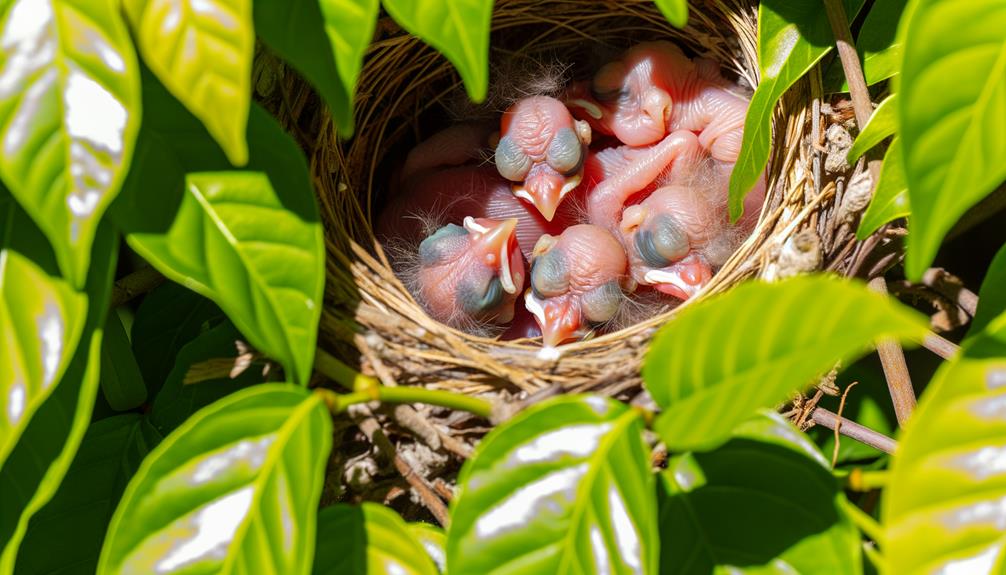
Throughout the nestling development stages, you'll observe significant physical and behavioral changes as the chicks rapidly grow and mature. Initially, the nestlings are altricial, meaning they are born blind and featherless. Within a few days, pin feathers emerge, giving way to more defined plumage. By day seven, their eyes open, and motor skills start to improve. The table below captures key milestones in nestling development:
| Day | Development Stage |
|---|---|
| 1-3 | Blind and featherless |
| 4-6 | Pin feathers appear |
| 7-9 | Eyes open, motor skills |
| 10-14 | Feather growth, mobility |
Parental Care and Feeding
Providing constant care and nourishment, parent sparrows play an essential role in the growth and survival of their nestlings. You'll observe that adult sparrows feed their young a diet rich in insects and seeds, ensuring ideal nutrition. Both male and female sparrows share feeding duties, making frequent trips to the nest throughout the day.
They're attentive and methodical, often cleaning the nest to maintain hygiene and prevent disease. Parent sparrows also exhibit protective behaviors, warding off predators and maintaining vigilance. By closely monitoring the nestlings' development, they adjust feeding frequency and quantity to match the growing demands.
This diligent care fosters strong, healthy fledglings ready for the challenges of life beyond the nest.
Fledging and First Flight
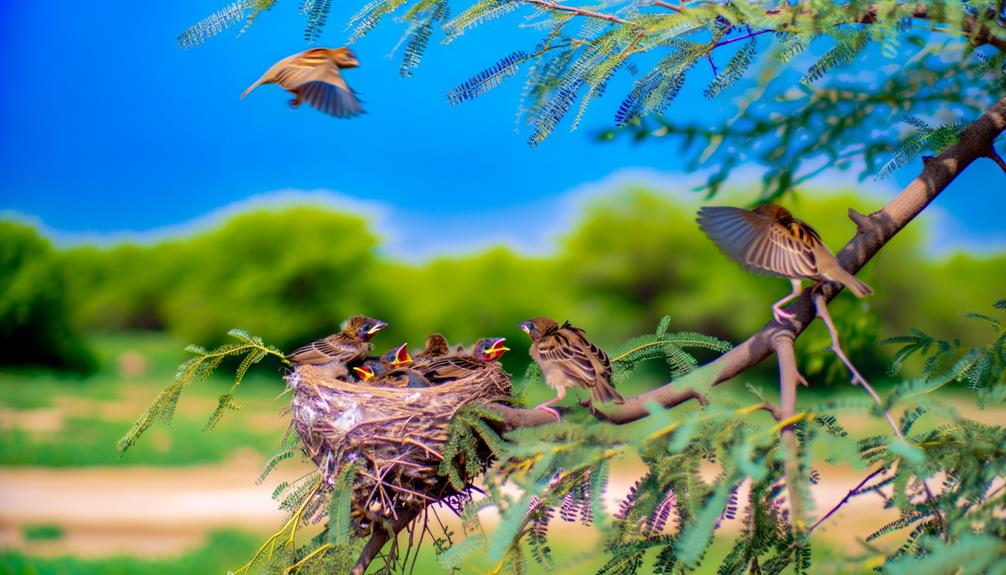
As the nestlings grow stronger, they reach the pivotal stage of fledging, where they take their first flight from the nest. During this time, you'll observe significant behavioral changes as they prepare. Fledging typically occurs between 14-17 days after hatching. Here's a table summarizing key observations:
| Observation | Description | Importance |
|---|---|---|
| Wing Flapping | Frequent, vigorous flapping of wings | Strengthens muscles for flight |
| Perching | Nestlings begin perching on nest edges | Improves balance and coordination |
| Vocalization | Increased calling and chirping | Communication with parents |
| Parental Encouragement | Adults coaxing nestlings to fly | Provides motivation and support |
| Initial Flights | Short, hesitant flights from the nest | Builds confidence and flight skills |
You play an essential role by ensuring their environment is safe and free from disturbances, aiding their successful progression to independence.
Conclusion
Imagine a sparrow's nest as a bustling classroom. In just two weeks, nestlings transform from fragile hatchlings to confident fledglings, ready for their first flight. Like students graduating, these young birds leave the nest equipped with essential survival skills.
Data shows that about 90% of fledglings successfully leave the nest, a proof of diligent parental care. So, when you see a young sparrow take to the skies, it's witnessing nature's version of a commencement ceremony.


